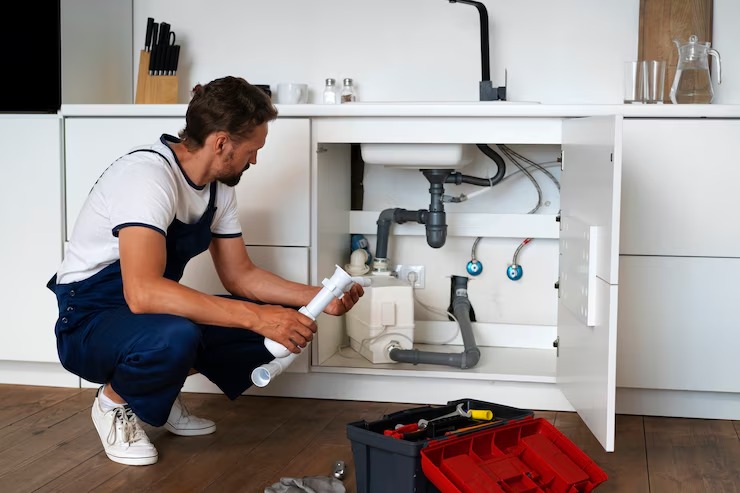Discover the Best Methods for Effective Blocked Drain Repair

Blocked drains are one of the most common plumbing problems faced by homeowners and businesses alike. Whether it’s a minor clog in the kitchen sink or a major blockage in the main sewer line, the issue can quickly escalate if not dealt with promptly. Blocked drains not only cause inconvenience but can also lead to unpleasant odors, water damage, and costly repairs. Fortunately, there are several effective methods available to tackle this problem.
In this article, we’ll explore the best methods for blocked drain repair, including both DIY solutions and professional techniques. By the end, you’ll have a clear understanding of how to handle drainage issues efficiently, when to attempt a fix yourself, and when it’s best to call in a professional.
Common Causes of Blocked Drains
Before diving into repair methods, it’s important to understand what typically causes blocked drains. Here are some of the most common culprits:
- Grease and fat buildup: Often found in kitchen sinks, grease and fat can solidify inside pipes and form stubborn clogs.
- Hair and soap scum: In bathrooms, hair and soap residue combine to form tough blockages.
- Foreign objects: Items like wipes, sanitary products, or children’s toys can accidentally get flushed or washed down the drain.
- Tree roots: In outdoor drains, tree roots can invade pipes through small cracks and expand, causing major blockages.
- Collapsed or damaged pipes: Older plumbing systems are especially vulnerable to cracks and collapses, which can obstruct water flow.
Understanding the cause helps determine the most suitable repair method.
DIY Methods for Minor Blockages
For minor blockages, you can often solve the issue yourself using simple tools and household items. Here are some effective do-it-yourself methods:
1. Boiling Water
One of the easiest and fastest ways to clear a drain is by pouring boiling water down it. This method works best for clogs caused by grease or soap, as the hot water can dissolve the blockage.
How to Use:
- Boil a kettle of water.
- Carefully pour it down the drain in two or three stages, allowing a few seconds between each pour.
Note: Avoid using boiling water on PVC pipes as it may soften or damage them.
2. Plunger
A plunger is a simple yet powerful tool that can dislodge blockages through suction and pressure.
How to Use:
- Fill the sink or tub with enough water to cover the plunger head.
- Place the plunger over the drain and push down firmly, then pull up quickly.
- Repeat this process 10–15 times until the water drains away.
This method works well for sinks, bathtubs, and toilets.
3. Baking Soda and Vinegar
A natural and chemical-free way to break down mild clogs is with baking soda and vinegar.
How to Use:
- Pour 1/2 cup of baking soda down the drain.
- Follow with 1/2 cup of white vinegar.
- Cover the drain with a plug or cloth for 15–30 minutes.
- Flush with hot water.
This method is particularly good for deodorizing and clearing minor buildup.
4. Drain Snake or Auger
A drain snake, also known as a plumber’s auger, is a flexible tool that can reach deep into pipes to break apart blockages.
How to Use:
- Insert the end of the snake into the drain.
- Turn the handle clockwise to feed the cable down the pipe.
- Once you feel resistance, continue twisting to dislodge the clog.
- Pull the snake out and run water to see if the blockage has cleared.
Chemical Drain Cleaners: A Cautionary Approach
Chemical drain cleaners are available at most hardware stores and can dissolve hair, grease, and other materials. However, they should be used with caution:
- Pros: Fast-acting, easy to use.
- Cons: Can damage pipes, harmful to the environment, and dangerous if mishandled.
Always follow the manufacturer’s instructions and wear gloves and protective eyewear.
Professional Methods for Stubborn Blockages
If your efforts don’t resolve the issue or the blockage is severe, it’s time to bring in a professional plumber. Here are the most effective methods professionals use:
1. CCTV Drain Inspection
Before repairing a blocked drain, plumbers often use a CCTV camera to identify the location and nature of the blockage.
Benefits:
- Non-invasive and accurate.
- Helps diagnose pipe damage, tree root invasion, or hidden objects.
2. High-Pressure Water Jetting
This method uses a high-pressure hose to blast water through the drain and break up tough clogs.
Benefits:
- Clears grease, roots, and debris effectively.
- Cleans the pipe walls thoroughly.
- Environmentally friendly—uses only water.
High-pressure jetting is ideal for commercial properties or homes with recurring drainage issues.
3. Drain Rodding
Drain rods are rigid yet flexible rods that can be joined together and pushed through pipes to remove obstructions.
Best For:
- Blockages close to the surface.
- Debris like leaves, dirt, or small roots.
It’s a manual method but very effective when used by experienced professionals.
4. Pipe Relining
If a blocked drain is caused by a broken or cracked pipe, pipe relining offers a trenchless solution to repair it.
How It Works:
- A resin-coated liner is inserted into the damaged pipe.
- It is inflated and cured, creating a new pipe within the old one.
Advantages:
- No need for excavation.
- Strengthens existing pipes.
- Quick and cost-effective compared to full pipe replacement.
5. Excavation and Pipe Replacement
In extreme cases where a pipe is too damaged for relining, excavation may be necessary.
When Needed:
- Severe pipe collapse.
- Extensive root damage.
- Corroded or outdated plumbing systems.
Though more invasive and costly, it ensures a permanent fix.
How to Prevent Future Blockages
Prevention is always better than repair. Here are some habits to keep your drains flowing freely:
- Avoid pouring grease down the sink: Instead, collect it in a container and dispose of it in the trash.
- Use drain covers: These prevent hair, food, and debris from going down the drain.
- Flush drains regularly: Pour hot water or use the baking soda/vinegar method once a month.
- Be mindful of what you flush: Only flush toilet paper and waste—no wipes, cotton balls, or sanitary items.
- Trim tree roots: If you have trees near your plumbing system, consider regular maintenance to avoid root intrusion.
When to Call a Professional
Some drain problems are best left to the experts. Call a plumber if you notice:
- Persistent foul odors from drains.
- Water backing up in sinks or tubs.
- Gurgling noises from pipes.
- Slow drainage in multiple fixtures.
- Recurring blockages despite DIY efforts.
Prompt professional help can prevent larger, more expensive repairs down the line.
Final Thoughts
Blocked drains are a nuisance, but with the right approach, they don’t have to be a disaster. Whether you opt for a simple DIY fix or require advanced plumbing solutions, the key is to act quickly and wisely. Keep your drains healthy with regular maintenance, and don’t hesitate to consult a professional for stubborn or recurring issues.
By discovering and applying the best methods for blocked drain repair, you can protect your property, save money, and enjoy peace of mind knowing your plumbing system is in good shape.




